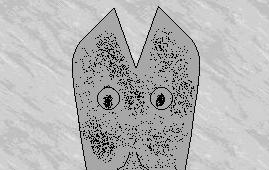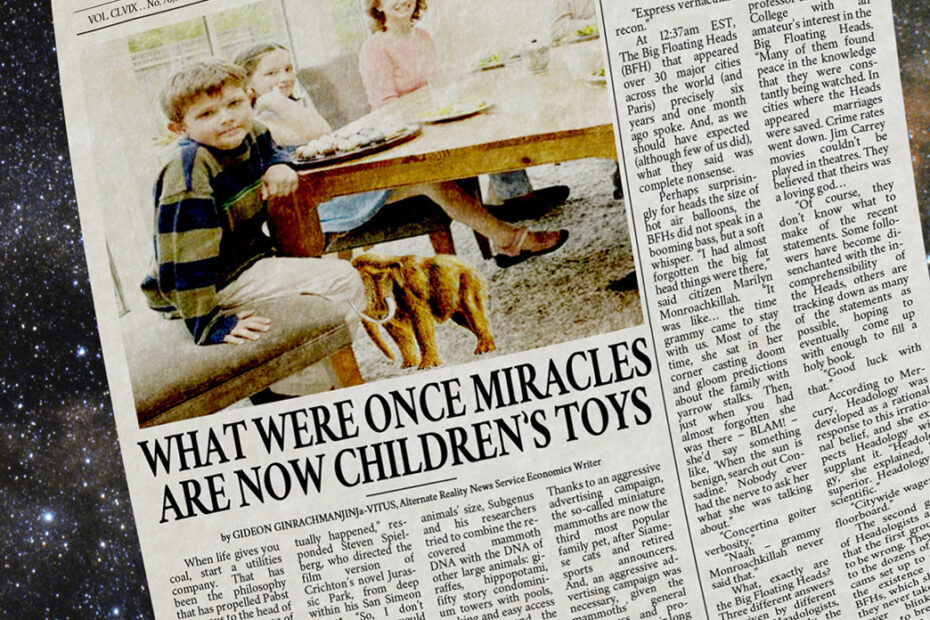by FREDERICA VON McTOAST-HYPHEN, Alternate Reality News Service Fashion Writer
You’re sipping a martini at an orgy when you spot her from across the room. She is voluptuous, her naked breasts large and swaying, with round ass sweet. Very sweet. You can’t believe that she hasn’t been pulled to the floor yet, but you don’t want to question your luck too closely, so you begin to make your way towards her over the writhing bodies. Unfortunately, just as you are about to reach her, you trip over a trio performing the Reverse Flying Rhino and spill your drink all over her fine, fine flesh.
The woman begins to shake violently and moan. You take this as a good sign, until you notice the wisps of smoke coming off her body, and realize that you have electrocuted her. As she falls to the floor, dead, you notice the Smart SuitTM she was wearing (and, much to your disappointment, that she actually has a flat chest and a sagging ass).
“You wouldn’t believe how many variations on that story I’ve heard,” remarked urban mythologist and the man who made wearing toupees cool, Jan Harold Brunvand. “Sometimes, it’s the size of a man’s penis that has been exaggerated by a Smart SuitTM. Sometimes, the person the story purportedly happened to trips over a dozen people performing a sexual act called A Flock of Seagulls. Sometimes, the drink is a Manhattan. Amusing, really, but all untrue.”
Although clearly an urban legend – “No, no, man. It’s real. It really happened!” interjected Pat McMorita, a sonic hairdresser from Devil’s Tibia, Nebraska. “My brother told it to me. He heard it from his girlfriend, who got it from a customer at her brain training school who swore it happened to his best friend’s cat trainer’s third cousin! Only, it wasn’t a Manhattan, it was a mojito. Otherwise, it’s true. IT REALLY HAPPENED!”
“No. That canna no be,” argued the inventor of Smart FabricTM, Eduardo Tamiroff. Tamiroff, a researcher at Italy’s famed Institut de Couture Technologique, explained: “The nanobot, she has no charge, almost no charge, yes? You canna no be electrocute. Worst case: you feel the sweet charge of soft a lips gently caressing a you skin. Issa no more than a gentle breeze on a you skin on a nice a summers day. No bad. Feels good. Feels very good – hunh hunh.”
So, as we were saying before we were so rudely interrupted: although clearly an urban legend, the story is not without some basis in fact. Smart ClothesTM are made of a fabric shot through with programmable nanobots. The first application of the technology, Mood ShirtsTM, allowed people to show others their emotional states: the clothes read the wearer’s vital signs, then projected images onto the clothes based on projections of what their vital signs indicated about their moods.
As the first entry in the J. Crew catalogue featuring Mood ShirtsTM explained: “Feeling happy? The Mood ShirtTM will display photos of puppies or sunsets on beaches. Confused? Salvador Dali paintings. Suicidal? Hieronymus Bosch woodcuts. Generalized feelings of ennui and dread? Annie Leibovitz clown photos. And, the best thing about Mood ShirtsTM? You can programme them to your own taste! Think Hieronymus Bosch is a barrel of laughs? Make his woodcuts your representation of happiness!”
Like Mood Rings before them, Mood ShirtsTM became immediately popular. Unlike Mood Rings, however, people almost immediately started adapting them for their own uses. In order to get around their limited memory, for instance, some people linked them to a WiFi network that allowed them to stream YouTube videos directly to their clothing. (That was the point, of course, when the MPAA threw up its hands and said, “You win!” Prematurely, as it turned out, since all those people acting as living billboards actually helped promote Hollywood movies.)
Giorgio Armani adapted the technology for upscale business suits. Conservative for office hours, the suits could change to wildly colourful and cheekily revealing for evening partying at the touch of a switch. Female executives realized that changing from slacks to a miniskirt wasn’t the only advantage a Smart SuitTM offered: it could also make their legs look a little shapelier, their asses appear to be a little higher.
“Cosmetic clothing!” enthused fashion maven and Italian AK-47 enthusiast Andr? Leon Talley. “Why go for expensive surgery when an expensive suit could make you look the same without the need for painkillers and ugly scarring?”
“Wait a minute!” McMorita interjected again. “So, the story I heard – it wasn’t true?”
We’ve already established that. Some stories about Smart ClothingTM are true. A lawsuit was filed against Tamiroff and the Institut by a man who forgot to turn the emotive function on his suit off at a holiday office party. While he was smiling and talking pleasantly to his boss, the suit was projecting images of violent deaths. Tamiroff successfully argued that it was the man’s own negligence that caused his termination from the company, and the lawsuit was dismissed.
Then, there was a brief period when the fashion for women was to programme their Smart SuitsTM to quickly cycle through dozens of images of naked women with different body types (likely inspired by an installation by Yoko Ono aptly called “Yi Yi Yi”). However, men didn’t know whether to be aroused or repulsed by the images, and the fad quickly died out.
The social ramifications of Smart ClothingTM are still being worked out. It may be, as Ono stated in the catalogue accompanying her installation, that “we should start to worry when our clothes are smarter than we are. Yi! Yi! Yi!”


